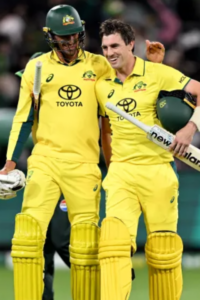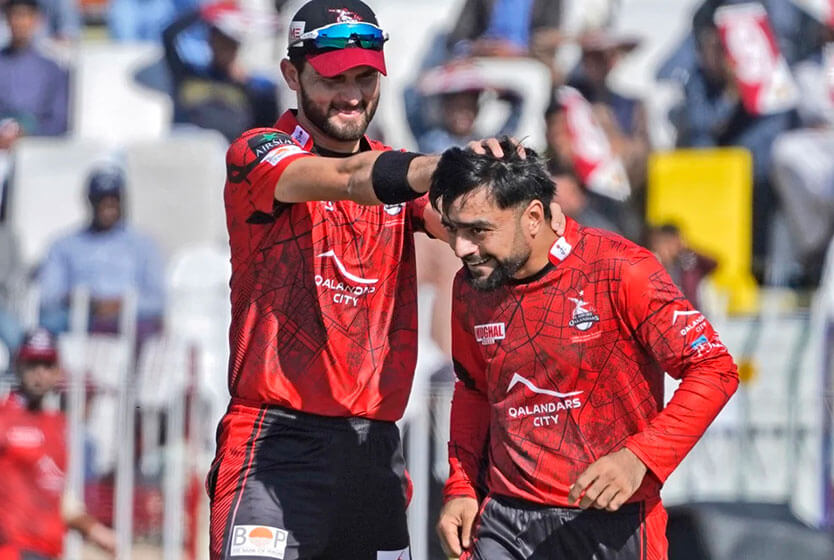
Pakistan’s Ideal T20 Batter
What is an “ideal” T20 batsman for a team like Pakistan?
So, who is it? Is it the guy who was ranked number one in the world for over two years?
Nope, he has intent problems. You compare his numbers against off-spin to other right-handers, and he’ll come up short because he’s happy to rotate them around, not taking advantage of the match-up.
Ok, so it must be his partner, the guy averaging 80 odd since he started opening the batting. His off-spin numbers are fitting of a right-hander – strike rate of over 170 but never been dismissed.
His issue is more about ability; he struggles to attack the balls that spin away from him – strike rate of 110 vs. leg-spin and slow left-arm.
Not to mention that with both our anchors, their innings will probably only positively impact the team if they play 40 or more balls.
We need someone dynamic. How about a left-handed opener?
Right, we got two of those. The first one had a few off-field issues, but we’re not here to judge. We’re picking him to take advantage of the Powerplay, but he strikes at under 120 there since his comeback. Not to mention he’s averaging under 20 there, so you aren’t getting much payoff from him in most games.
All right, the other one then. Really great ODI opener, maybe our second-best of all time. He’s got to be dynamic enough for you?
Similar problem, not really a Powerplay maximizer.
All right, but his numbers in other phases are really good. How about we play him in the middle order?
Sure, but he isn’t the spin hitter you think he is. All of the spin bashing is done when he is set – SR 174 after 30 balls.
Fair enough. There is that guy who was literally the player of the tournament in the recently concluded PSL – struck at 163 vs. spin and 160 vs. pace while averaging above 25+ for both. There is your dynamic player – the ideal T20 batter.
That’s what it looks like, but then you split his pace numbers into medium (below 140 kph) and high pace (140+ kph). You then also split his spin numbers into finger-spin and wrist-spin. He isn’t a ‘dynamic’ player; he’s a high intent junk hitter who struggles against quality bowling.
Jeez, that was harsh. Fine, bring back the young guy who got a fifty on debut; he’s a good number three.
Can’t be a good number three if your powerplay numbers read 3 dismissals in 6 overs. He looks very vulnerable to the seaming ball early on. Should play more domestic cricket.
Fine, fine. How about an older guy?
We got a few octogenarians floating around. One struggles to start against spin and the other against high pace. So obviously the ideal positions for them are four and six respectively.
Didn’t wanna ask, but it’s the heavy guy, isn’t it? He’s our most dynamic T20 batter?
Not by a long shot. He gets seriously cramped when high pace is directed at his body and doesn’t always take proper advantage of match-ups.
Right then, final guess. It’s one of the Islamabad guys.
First off, that’s cheating. Your final guess is an entire PSL line-up?
Fine, fine, the tried and tested failures.
The definition of that varies from person to person, but I think I know who you mean. One finds it difficult to go at a strike rate of over 100 vs. spin. And while the other won’t hold back, he has the 4th lowest balls per dismissal vs. spin (min. 200 balls).
It’s been 600 words, and all you have done is humor me. Give me a straight answer!
You remember those lego boxes we used to get? Not the ones with instructions, with specific blocks, created to push the corporate machine. No, the ones that had multiple different blocks, no manual, just go nuts. That’s what any player pool is. Different blocks, built to serve different roles. A block that fits every role only comes around once in a lifetime; if you go looking for six of them, you’re going on a wild goose chase.
Instead of screaming at the blocks to change, maybe you should see how they can complement each other. See how they fit with each other, who goes well with who. Who amplifies the other’s strengths while hiding his weaknesses…
If one player could win you games, you wouldn’t need to pick eleven. Pakistan needs to play smart and make sure players complement each other instead of amplifying weaknesses.
Case in point: Mohammad Hafeez walking in at #4 when Rizwan was at the crease with two leg spinners operating. Rizwan, as mentioned before, strikes at 110 against balls spinning away, while Hafeez has a starting strike rate of 90 vs. spin. It was doomed to fail, and fail it did. Rizwan faced 6 balls and Hafeez 8. According to the aforementioned numbers, we can calculate that this partnership would produce 13 runs in 14 balls on an average day. Their partnership yielded 11 from 14 balls, after which Rizwan departed. When Hafeez arrived at the crease, the required rate hovered around 11. When he got out, it had risen to almost 14. The middle-order slowdown would cost Pakistan the game.
There are no magical unicorns that will come to save you. There will be days when you will be blown away. Days where both anchors don’t play 40+ balls, days where the spin hitters get bounced out, and pace hitters get exposed to spin early. Those days will happen, but you can control the frequency of these occurrences.
Ha, so this was just all a setup for your big speech, could’ve just tweeted it. The title is misleading, by the way. You didn’t tell us Pakistan’s ideal T20 batter.
Ah yes, the ideal T20 batter(s) for Pakistan fans is the one that scored today. All who failed should be dropped and shouldn’t be allowed within 200 yards of a cricket ground.







Leave a Reply